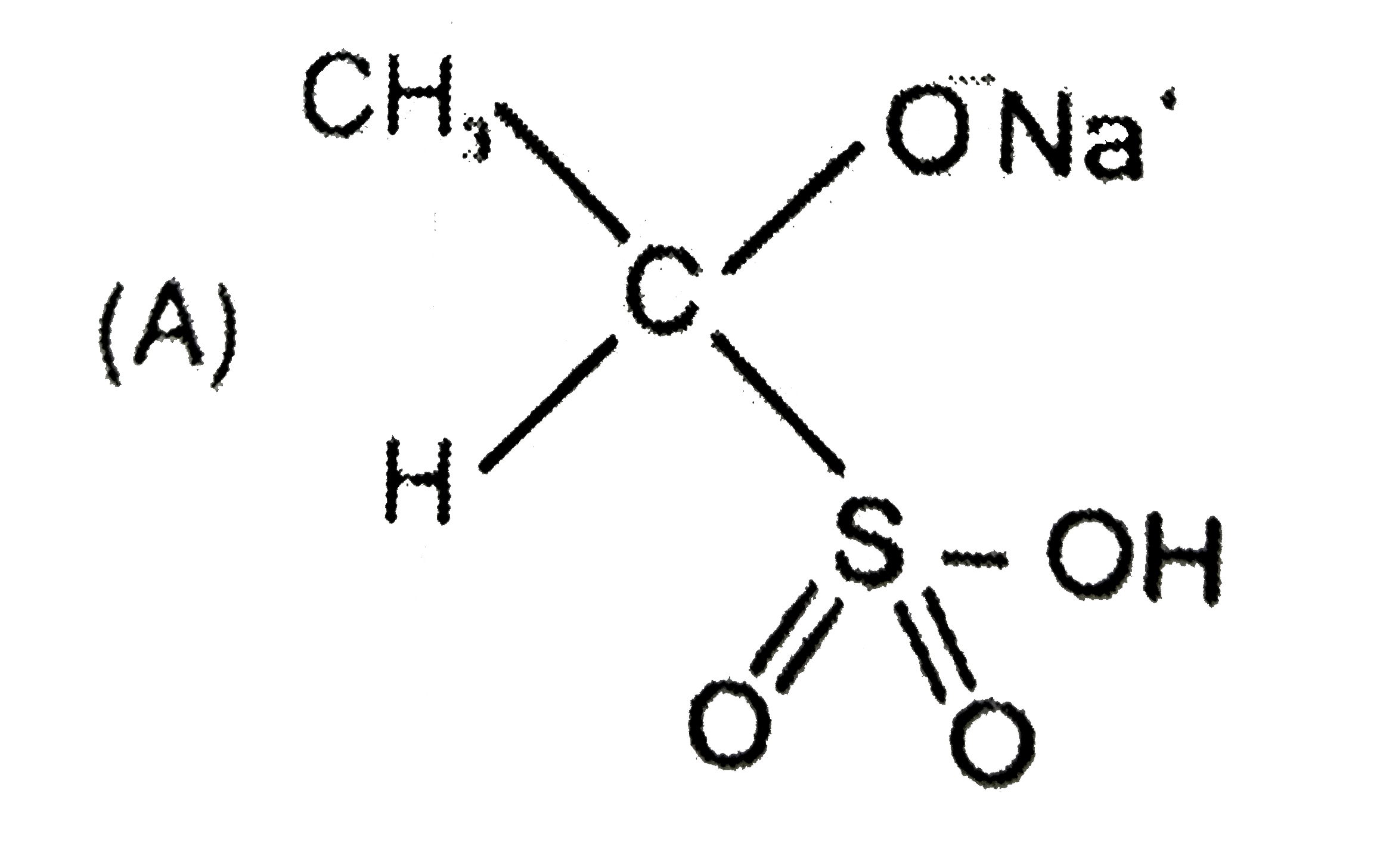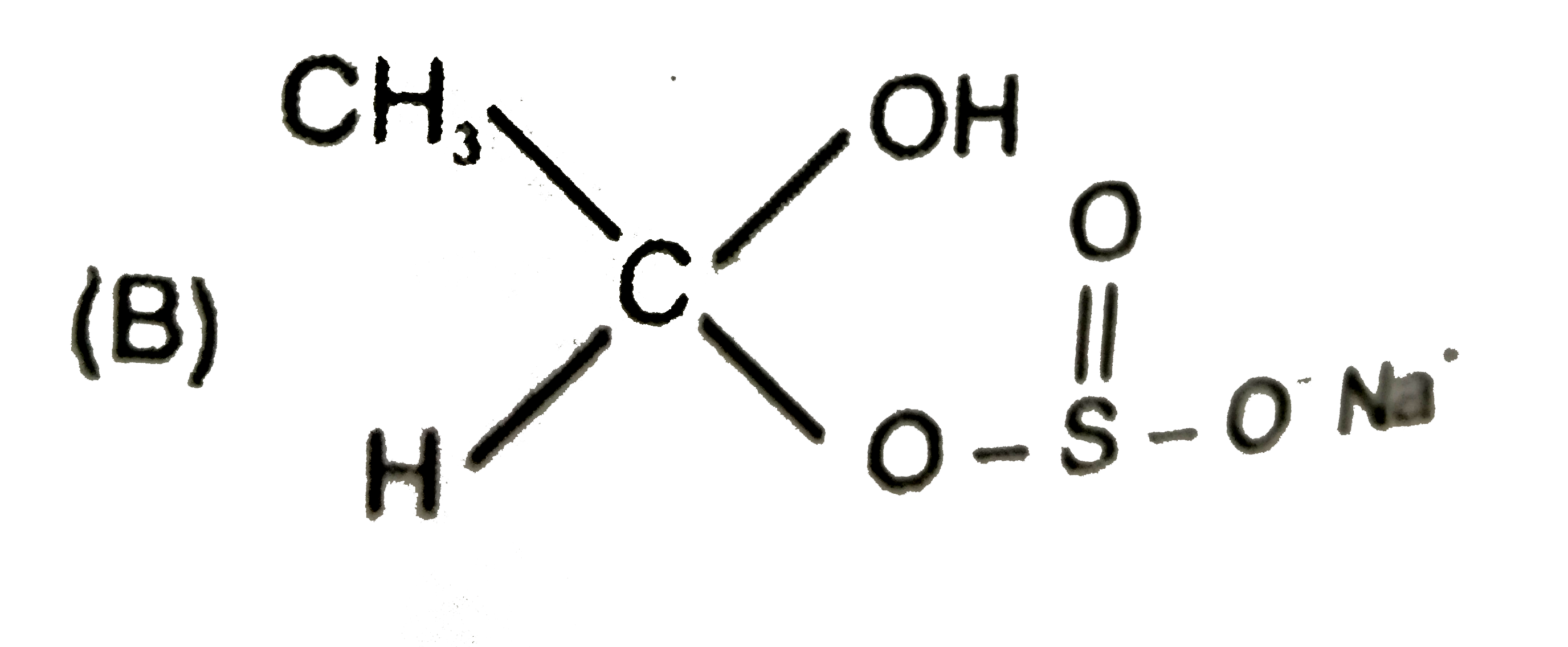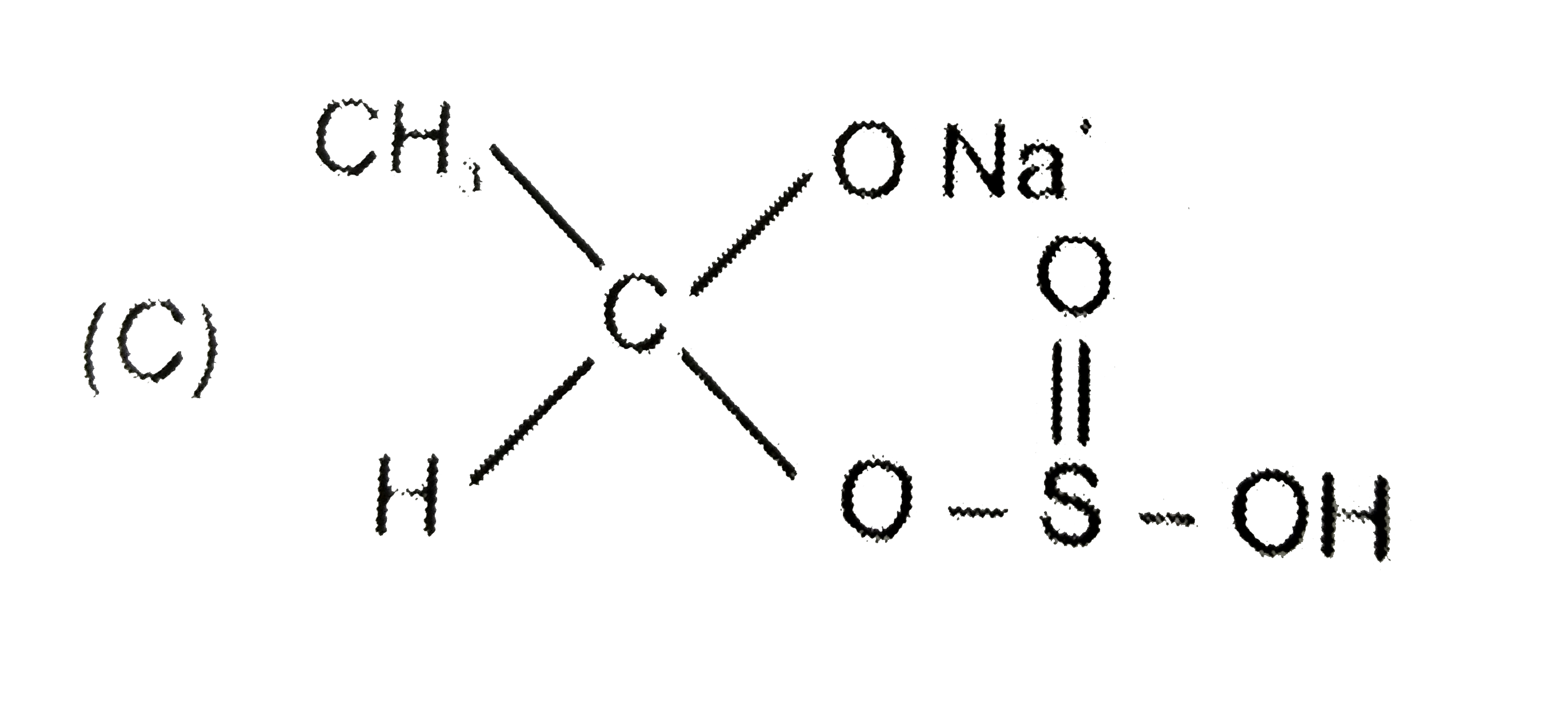Acetaldehyde on reaction with sodium hydrogen sulphite produces




The correct Answer is:D
To solve the question regarding the reaction of acetaldehyde with sodium hydrogen sulfite, we will follow these steps:
Step 1: Identify the Reactants
The reactants in this reaction are acetaldehyde (CH₃CHO) and sodium hydrogen sulfite (NaHSO₃).
Step 2: Understand the Structure of Acetaldehyde
Acetaldehyde has the structure:
H|H−−C=O|H
In this structure, the carbonyl carbon (C=O) is electrophilic due to the partial positive charge on the carbon atom.
Step 3: Structure of Sodium Hydrogen Sulfite
Sodium hydrogen sulfite can be represented as:
O∣∣Na−S−OH
Here, the sulfur atom has a partial positive charge and can act as a nucleophile.
Step 4: Nucleophilic Attack
The nucleophilic sulfur atom from sodium hydrogen sulfite attacks the electrophilic carbon atom of the carbonyl group in acetaldehyde. This leads to the formation of a tetrahedral intermediate.
Step 5: Formation of the Sulfonate Product
The reaction proceeds, and we get a sulfonate product. The structure of the product can be represented as:
H∣∣H−−C−−O−SO₃Na∣∣H
This product is known as the sodium bisulfite addition compound of acetaldehyde.
Step 6: Final Product
The final product formed when acetaldehyde reacts with sodium hydrogen sulfite is:
- Sodium bisulfite adduct of acetaldehyde, which can be represented as CH₃CH(OSO₃Na)OH.
Conclusion
The correct answer to the question is that acetaldehyde reacts with sodium hydrogen sulfite to produce the sodium bisulfite adduct.
---
The reactants in this reaction are acetaldehyde (CH₃CHO) and sodium hydrogen sulfite (NaHSO₃).
Acetaldehyde has the structure:
H|H−−C=O|H
In this structure, the carbonyl carbon (C=O) is electrophilic due to the partial positive charge on the carbon atom.
Sodium hydrogen sulfite can be represented as:
O∣∣Na−S−OH
Here, the sulfur atom has a partial positive charge and can act as a nucleophile.
The nucleophilic sulfur atom from sodium hydrogen sulfite attacks the electrophilic carbon atom of the carbonyl group in acetaldehyde. This leads to the formation of a tetrahedral intermediate.
The reaction proceeds, and we get a sulfonate product. The structure of the product can be represented as:
H∣∣H−−C−−O−SO₃Na∣∣H
This product is known as the sodium bisulfite addition compound of acetaldehyde.
The final product formed when acetaldehyde reacts with sodium hydrogen sulfite is:
- Sodium bisulfite adduct of acetaldehyde, which can be represented as CH₃CH(OSO₃Na)OH.
The correct answer to the question is that acetaldehyde reacts with sodium hydrogen sulfite to produce the sodium bisulfite adduct.
Topper's Solved these Questions
- CARBONYL COMPOUNDS (ALDEHYDES & KETONES ) & CARBOXYLIC ACID BOOK - RESONANCE ENGLISHCHAPTER - CARBONYL COMPOUNDS (ALDEHYDES & KETONES ) & CARBOXYLIC ACID EXERCISE - Part-III
8 Videos
- CARBONYL COMPOUNDS (ALDEHYDES & KETONES ) & CARBOXYLIC ACID BOOK - RESONANCE ENGLISHCHAPTER - CARBONYL COMPOUNDS (ALDEHYDES & KETONES ) & CARBOXYLIC ACID EXERCISE - Exercise-2 Part-I
1 Videos
- CARBONYL COMPOUNDS (ALDEHYDES & KETONES ) & CARBOXYLIC ACID BOOK - RESONANCE ENGLISHCHAPTER - CARBONYL COMPOUNDS (ALDEHYDES & KETONES ) & CARBOXYLIC ACID EXERCISE - Exercise-1 Part-II
1 Videos
- BIOMOLECULES & POLYMERBOOK - RESONANCE ENGLISHCHAPTER - BIOMOLECULES & POLYMEREXERCISE - ORGANIC CHEMISTRY(Biomolecules & Polymer)
34 Videos
- CHEMICAL KINETICSBOOK - RESONANCE ENGLISHCHAPTER - CHEMICAL KINETICSEXERCISE - PHYSICAL CHEMITRY (CHEMICAL KNIETICS & RADIOACTIVITY)
49 Videos
Similar Questions
Knowledge Check
Acetaldehyde on treatment with hydrogen cyanide followed by hydrolysis gives:
Aformic acidBacetic acidClactic acidDtartaric acidAcetaldehyde on treatment with hydrogen cyanide followed by hydrolysis gives:
Aformic acidBacetic acidClactic acidDtartaric acidAcetaldehyde on treatment with hydrogen cyanide followed by hydrolysis gives:
Aformic acidBacetic acidClactic acidDtartaric acid
(a) Illustrate the following name reactions by giving example :
(i) Cannizzaro's reaction
(ii) Clemmensen reduction
(b) An organic compound A contains 69.77% carbon , 11.63 % hydrogen and rest oxygen .
The molecular mass of the compound is 86. it does not reduce Tollen's reagent but forms an addition compound with sodium hydrogen sulphite and give positive iodoform test.
On vigorous oxidation it gives ethanoic and propanoic acid. Derive the possible structure of compound A .
View SolutionSulphur is precipitated in the reaction of hydrogen sulphide with sodium bisulphite solution.
View SolutionDraw structure Sodium hydrogen phosphate
View SolutionGive balanced equations for the following reactions :
Acetaldehyde reacts with hydrogen cyanide.
View SolutionThe final product formed when acetaldehyde is reduced with sodium and alcohol is
View Solution
